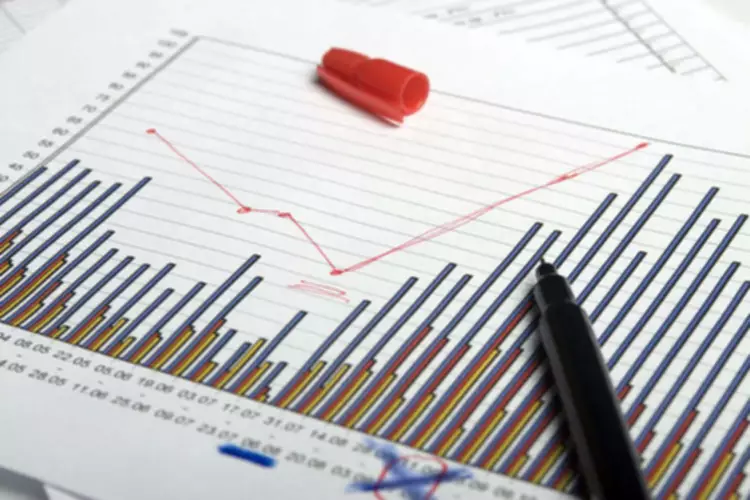Weighted Average Shares Outstanding Example How to Calculate
Content

In the second 6-month period, the company’s number of shares outstanding is 150,000. The balance sheet is a financial statement issued by the company that provides a full accounting of the company’s assets, liabilities, and shareholder’s equity at a particular moment in time. In other words, the balance sheet is a snapshot of what a company owns, what it owes, and the total amount that has been invested by shareholders. Investors may look at the shareholder’s equity section on a company’s balance sheet.
Simple Stock Profit Calculator – MarketBeat
Simple Stock Profit Calculator.
Posted: Wed, 02 Nov 2022 20:34:28 GMT [source]
The lawyers at UpCounsel’s marketplace represent the top five percent of legal professionals and they come from the country’s best law schools. You can find advice from lawyers who have 14 years of legal experience offering counsel to Fortune 500 companies. The balance sheet is one of the key documents that investors use to evaluate a company, so it’s important to become familiar with it. As the number of outstanding stock decreases by 1,000, the company’s EPS increases by 6.54%. Stocks In The TreasuryTreasury Stock is a stock repurchased by the issuance Company from its current shareholders that remains non-retired. Moreover, it is not considered while calculating the Company’s Earnings Per Share or dividends.
Diluted EPS
Companies can issue new shares and buy back shares, which affects the value of the shares they hold. Investors should track the number of shares outstanding throughout the investment period to determine how these changes impact their investment earnings. Floating shares serve as a good representation of the company’s active shares or share turnover among various investors in the market, excluding parties holding substantial portions of equity. Diluted ShareDiluted shares can be defined as the total number of shares that the company has at a particular point that can be converted into the normal share by the holders . It is done by exercising the right to alter such shares into ordinary shares. Please don’t confuse shares outstanding with authorized stock and issued stock as they are completely different, and shares outstanding is a subset of both authorized stock and issued stock.
- Publicly traded firms list the number of shares outstanding on their balance sheets.
- In other words, this is the price you would expect to pay per share if all other factors were equal.
- This means you can find the values of the preferred stock as well as net income directly from the financial statements and use them to calculate the EPS ratio.
We will use 562,500 because in the above calculation we assigned weights according to the time proportion that the share outstanding figure was unchanged. For example, the opening figure of 500,000 remained unchanged for 3 months (i.e., 25% of the total time of the year) until the start of second quarter, after which it changed. Learn accounting fundamentals and how to read financial statements with CFI’s free online accounting classes. Retail InvestorsA retail investor is a non-professional individual investor who tends to invest a small sum in the equities, bonds, mutual funds, exchange-traded funds, and other baskets of securities. They often take the services of online or traditional brokerage firms or advisors for investment decision-making.
Company
Often, a company does this to meet listing requirements, which often require a minimum share price. This line refers to a special class of shares that gives investors certain privileges, such as a periodic dividend.
A company’s number of shares outstanding is used to calculate many widely used financial metrics. Market capitalization — share price times number of shares outstanding — and EPS are both computed using a company’s number of outstanding shares. The number of shares outstanding increases if a company sells more shares to the public, splits its stock, or employees redeem stock options. The number of shares outstanding decreases if the company buys back shares or a reverse stock split is completed. The value of the earnings per share of a particular company determines if investors would buy their shares once they are open for sale. Businesses repurchase stock to increase the price of the remaining outstanding shares. They may also repurchase stock if management feels the company is undervalued.
How to Calculate Outstanding Shares
For example, let’s say you want to calculate the weighted average number of outstanding shares for a company over two reporting periods of 6 months each. In the first 6-month reporting period, the company has 100,000 shares outstanding.

You will find the total number of outstanding shares listed on your company’s balance sheet under the “Capital Stock Issued and Outstanding” heading. You can also calculate the number of outstanding shares by adding the total number of preferred stock shares to the total number of common stock shares, and then subtracting the total number of treasury shares. Other methods for determining outstanding share totals include looking at the company’s how to calculate shares outstanding market capitalization, earnings per share , or cash flow per share . “Issued shares” are a company’s authorized shares that are sold to shareholders, including those sold and held by company founders and insiders, institutional investors, and the general public. When stocks are first issued, outstanding shares and issued shares are the same thing. When a company buys back shares of its own stock, however, those shares become treasury shares.
Amendments under consideration by the IASB
Market capitalization and earnings per share are the two of the most significant investor metrics used to determine a company’s current market value and overall performance. In the United States, the figures for outstanding shares are accessible from the Securities and Exchange Commission quarterly filings.
How do you calculate the total shares of a company?
If you know the market cap of a company and you know its share price, then figuring out the number of outstanding shares is easy. Just take the market capitalization figure and divide it by the share price. The result is the number of shares on which the market capitalization number was based.
Quarterly filings are accessible using the US EDGAR. In Germany, those figures are available using the German company register, the central platform for https://www.bookstime.com/ storage of company data. In the Netherlands, the Netherlands Authority for the Financial Markets provides on its website a register of issued capital.

